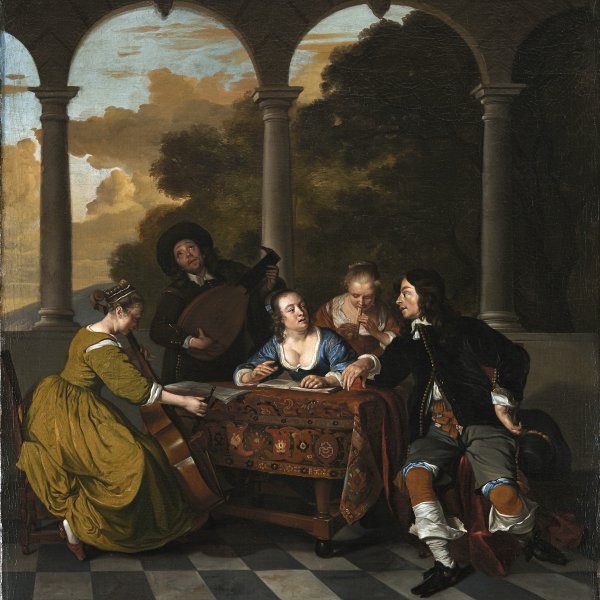Jacob van Loo
Sluis, 1614-París, 1670
Son of the genre painter Jan van Loo, with whom he first trained, Jacob van Loo was born in 1614 in Sluis near Bruges. In 1642 he is documented in Amsterdam where he married Anna Lengele, sister of the painter Maerten Lengele. During his first ten years in Amsterdam his paintings were notably influenced by the Flemish school, in particular the work of Van Dyck. Van Loo’s paintings of this early period are complex compositions, generally on mythological themes. In the 1650s he began to paint scenes of galanterie featuring musicians, soldiers and young women engaged in conversations, games and flirting in which the relationship between the figures is crucial to the narrative content of the work. Van Loo’s compositions of this type are considered to be among the earliest such genre paintings and inspired similar works by Vermeer. During these years his style came close to that of Gerard ter Borch and Nicolaes Maes, and together with Gerbrand van den Eeckhout he is considered the creator of the “conversation piece”. Van Loo was also highly esteemed as a portraitist and secured two important commissions in 1658 to paint The Regents and The Regentesses of the Haarlem Almshouse (Frans Hals Museum, Haarlem).
In the autumn of 1660 Van Loo was involved in a fight that resulted in a death. Accused of murder, he fled from Holland and settled in Paris. There he continued to enjoy great success and in 1663 was admitted to the Académie Royale as a portrait painter, presenting as his entry work a portrait of Michel Corneille the Elder (Musée du Louvre, Paris). Through the eloquence of the gestures and with an almost complete absence of accessories, this portrait skilfully conveys the sitter’s character. Van Loo’s two sons, Jean and Abraham van Loo, became painters and worked in the south of France. His descendents continued the family tradition until the 19th century.
In the autumn of 1660 Van Loo was involved in a fight that resulted in a death. Accused of murder, he fled from Holland and settled in Paris. There he continued to enjoy great success and in 1663 was admitted to the Académie Royale as a portrait painter, presenting as his entry work a portrait of Michel Corneille the Elder (Musée du Louvre, Paris). Through the eloquence of the gestures and with an almost complete absence of accessories, this portrait skilfully conveys the sitter’s character. Van Loo’s two sons, Jean and Abraham van Loo, became painters and worked in the south of France. His descendents continued the family tradition until the 19th century.





